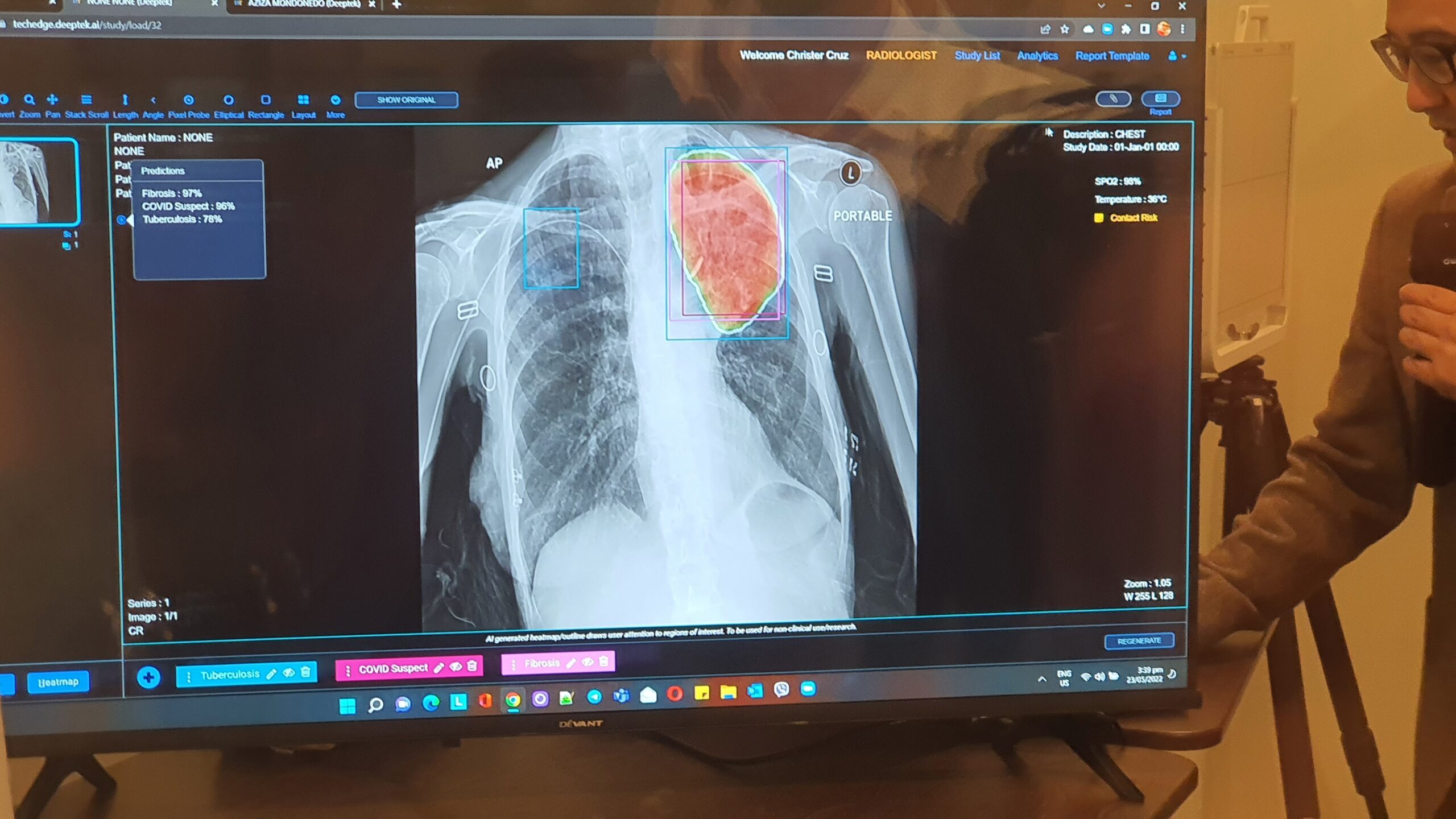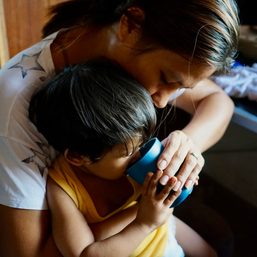SUMMARY
This is AI generated summarization, which may have errors. For context, always refer to the full article.

MANILA, Philippines – The Philippines, like many other countries around the world, is struggling with a shortage of radiologists. But innovations in medical artificial intelligence might help with that.
The Philippines has more than 110 million people spread out over thousands of islands. But that population is served by about 2,500 radiologists, Dr. James delos Santos, president of the Philippine College of Radiology, told Rappler.
That means the Philippines only has about 2 radiologists per 100,000 Filipinos. To put that in perspective, developed countries like the United Kingdom and Singapore have 8.5 per 100,000 and 7.6 per 100,000, respectively, and they’re already grappling with their own radiologist shortages.
In light of the shortage, an all-Filipino company hopes to use AI-assisted equipment to help the country’s few radiologists do more. Advanced Abilities is bringing what it calls a “portable AI-driven X-ray system” that has the ability to detect diseases in minutes and serve more patients with shorter waiting times.

Partnering with Indian AI medical imaging firm DeepTek, the X-ray system distributed by Advanced Abilities can detect 32 pathologies and conditions, including tuberculosis. The system can conduct 200 scans in eight hours, with each scan showing an AI-powered percentage prediction of possible conditions.
“These technologies are not here to replace, but to aid. It’s a tool. It makes our productivity and outputs more efficient,” Advanced Abilities chief executive officer and president Angelo Antonio Buendia said.
Even with the new technology, a radiologist would still be required to verify, approve, and sign the generated report. What the AI helps with is speeding up the process and allowing a single radiologist to do more scans than they could before.
“This solution is already being used in Chennai City, India, where 500 in every 100,000 patients are getting a diagnosis, demonstrating a 25 times increased yield of detecting tuberculosis. This kind of result can now be replicated here in the Philippines with the help of AI Smart Scan,” Buendia said, adding that it is already being deployed in some Maxicare clinics.
The AI also has a triaging feature which lets radiologists know which scans to prioritize. For instance, if a radiologist has dozens of scans lined up, the AI system can bump up certain scans in the queue based on the suspected morbidity of the cases.
Like many AI solutions, DeepTek’s AI works by aggregating data from the scans of many patients, but the system promises to follow ethical and responsible AI guidelines. It is designed so that a radiologist can see whether a person’s age, group, ethnicity, weight, or gender could affect the accuracy of the scan’s result – transparency that can help avoid bias in the AI’s model.
“AI is still in its early stage, and AI accuracy might change from location to location,” said DeepTek CEO Ajit Patil. “This responsibly gives you full transparency into what is the real world accuracy of your AI on a day-to-day basis.”
The AI system has secured regulatory approval in the United States, Thailand, India, and Kenya. In the Philippines, the Department of Science and Technology’s Health Technology Assessment Council is also examining the system
“The AI already has US [Food and Drug Administration] approval. We are currently in the application process for Philippine FDA. For the X-ray machine, we are fully compliant with all necessary permits and certifications, including Philippine FDA and [Bureau of Customs] requirements for important,” Buendia told Rappler.
Is AI the only solution?
Before we rush to embrace AI as the solution to the country’s problems, there are some important considerations.
For instance, while it’s true that the Philippines lacks radiologists, Philippine College of Radiology president Delos Santos emphasizes that it’s a “relative sort of shortage.” The country’s radiologists and the expensive equipment that they need are mostly based in the cities, which means the challenge is getting both the doctors and the tools to the provinces.
“In the peripheries, yes, you would expect that there will be less radiologists because as you see the practice of radiology is not just like an internist nor a family medicine physician that you see patients, you get consultations, you do physical examination and give medications,” Delos Santos told Rappler.
“We are technologically based. So if you lack machines in a certain outskirt, it’s also difficult for you to have a radiologist because the radiologist cannot work on anything,” he added.
This gap of equipment and radiologists is where AI X-ray systems like Advanced Abilities’ hope to come in, but even then, a radiologist would still be needed to double-check results. Since radiologists would still be needed to check the scans, Delos Santos said that we should see what improvements AI could offer over existing practices.
For instance, it’s worth checking whether the portable X-ray and AI system is really more cost-effective than setting up a mobile clinic with an X-ray. By using the mobile clinic and tele-radiology, a digital copy of the X-ray scan could also be sent to a radiologist based elsewhere – such as the city – to be read. Mobile clinics also have the advantage of being able to accommodate machines for other tests like mammography and ultrasound.
“AI can aid in the diagnosis of tuberculosis, but I think what’s more important is actually to tap your radiologists, and at the same time using another old technology, which is tele-radiology. Basically it’s just a simple way of sending the image to the radiologist for it to be read, and it can be transported back agad (immediately),” Delos Santos told Rappler.
There’s also the question of the effectivity of the AI system. While DeepTek said that it’s AI performs above global standards with “90% specificity and 90% sensitivity,” Delos Santos cautioned that AI always has a learning curve. For instance, he said that when trying to diagnose tuberculosis, one has to be wary of “an entire gamut of diseases” that can similarly present itself in the upper lobes of certain patients.
“If it will be based on AI alone, then there can be some fault in the diagnostic process. That’s why you need a radiologist on top of the AI to be able to really check and verify if this is really [tuberculosis] or not,” he said. – Rappler.com
Add a comment
How does this make you feel?
![[ANALYSIS] Hippocrates and hypocrites](https://www.rappler.com/tachyon/2024/07/TL-medical-ethics-june-27-2024.jpg?resize=257%2C257&crop=314px%2C0px%2C720px%2C720px)




There are no comments yet. Add your comment to start the conversation.